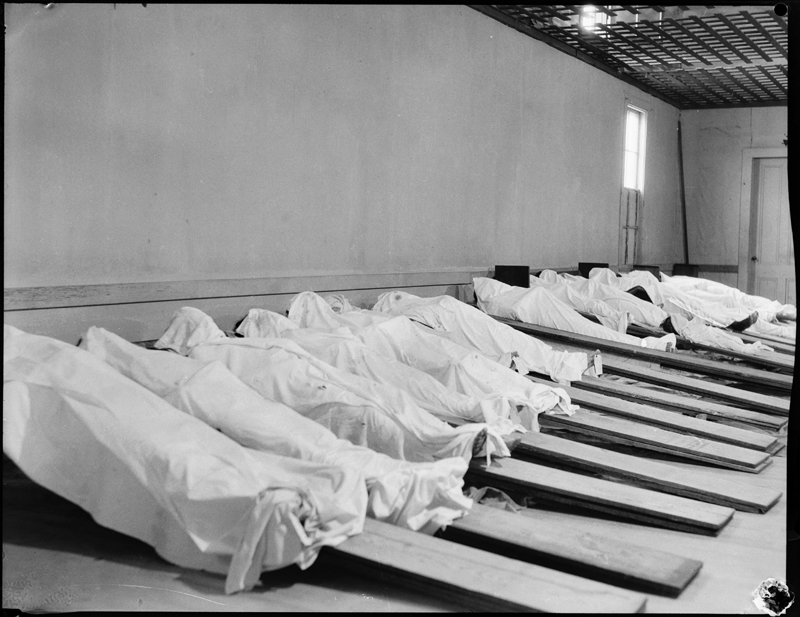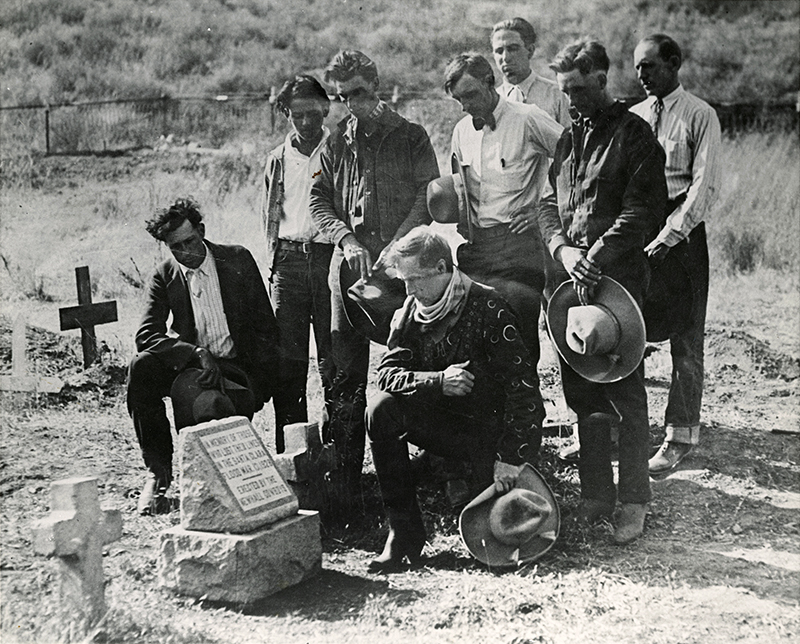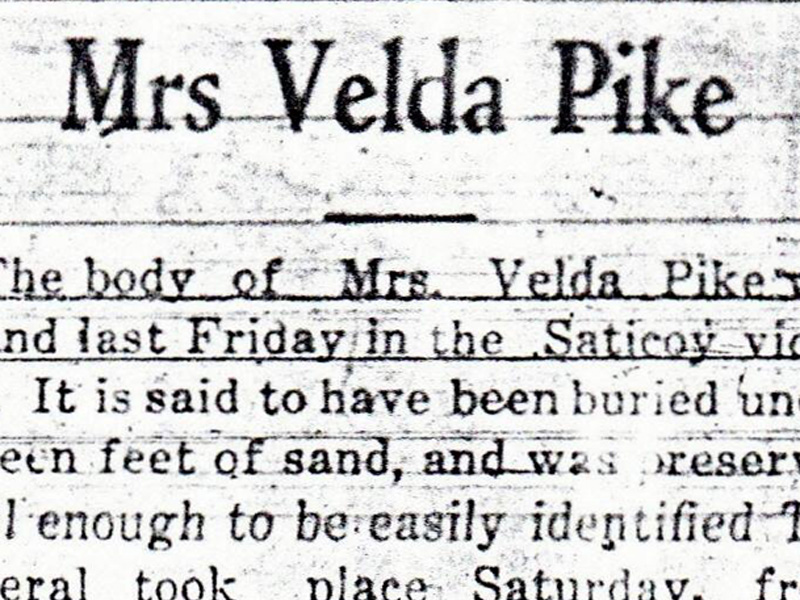|
|
Newhall, California

Click image to enlarge | [Original Scan]
At least 78 bodies were stacked up at one time inside the Masonic hall at Railroad Avenue and Market Street in Newhall, aka Hap-A-Lan dance dall, which was converted into one of several makeshift morgues along the St. Francis floodpath. Volunteers were already setting up improvised slabs inside the building at 4 a.m. on March 13, 1928, before the flood had even reached the Pacific Ocean. Los Angeles Times photograph (negative), from the Los Angeles Times Photographic Archive, Department of Special Collections, Charles E. Young Research Library, UCLA. Notes on negative sleeve read: The St. Francis Dam was a 200-foot high concrete gravity-arch dam built between 1924 and 1926 in [San] Francisquito Canyon (near present-day Castaic and Santa Clarita). The dam collapsed on March 12, 1928 at two and a half minutes before midnight. The resulting flood killed more than 600 residents plus an unknown number of itinerant farm workers camped in San Francisquito Canyon, making it the 2nd greatest loss of life in California after the 1906 San Francisco earthquake. It is considered the worst American civil engineering failure in the 20th century. Temporary morgues for flood victims were established and Piru, Santa Paula, Filmore, Oxnard, Newhall, Ventura and Bakersfield. Up to March 18, 273 bodies had been recovered. The location of the morgue is provided in a hand drawn map published in the Los Angeles Times, 14 Mar. 1928: 2. The 1880's building was located at the northwest corner of Railroad Ave. and Market St. in Newhall. It had been the J.O. Newhall general store, the Gulley-Swall general store, the El Dorado saloon and, at the time of the flood, the Hap-A-Lan dance club. After its use as a morgue it was torn down and in 1931 the county courthouse was built on the property. Bodies of twelve flood victims enshrouded in sheets and resting on inclined wooden boards in an improvised morgue in Newhall.
Seven miles up San Francisquito Canyon Road from today's Copper Hill Drive, construction on the 700-foot-long, 205-foot-high St. Francis Dam started in August 1924. With a 12.5 billion-gallon capacity, the reservoir began to fill with water on March 1, 1926. It was completed two months later. At 11:57:30 p.m. on March 12, 1928, the dam failed, sending a 180-foot-high wall of water crashing down San Francisquito Canyon. An estimated 431 people lay dead by the time the floodwaters reached the Pacific Ocean south of Ventura 5½ hours later. It was the second-worst disaster in California history, after the great San Francisco earthquake and fire of 1906, in terms of lives lost — and America's worst civil engineering failure of the 20th Century.
LW2715: 19200 dpi jpeg. Source cited; reproduced under Creative Commons Attribution 4.0 International License. Online image only. |
ALSO SEE:
Background: Forgotten Casualties (CSUN 2013)
• Memorialization and Memory • Paper: Oral History (Licon 2014) Story: Victims & Heroes
FILM: Body Recovery, Newhall Morgue
FILM: Nighttime Recovery of Bodies
3-17-1928
Tony Harnischfeger
Lyman & Lillian Curtis
Marjorie & Mazie Curtis (Mult.)
San Francisquito School
Cecilia Small, Schoolteacher
Ruiz Family x7
Pete Rivera
Erratchuo 1928
1928 Mourners
Newhall Cowboys 1928 Marker x2
Newhall Morgue
Gottardi Family
Felda Pike Obituary
Saugus Community Club Members
Oral History: Thelma McCawley Shaw 2010
Oral History: Biz Basolo 2009
|
The site owner makes no assertions as to ownership of any original copyrights to digitized images. However, these images are intended for Personal or Research use only. Any other kind of use, including but not limited to commercial or scholarly publication in any medium or format, public exhibition, or use online or in a web site, may be subject to additional restrictions including but not limited to the copyrights held by parties other than the site owner. USERS ARE SOLELY RESPONSIBLE for determining the existence of such rights and for obtaining any permissions and/or paying associated fees necessary for the proposed use.



















